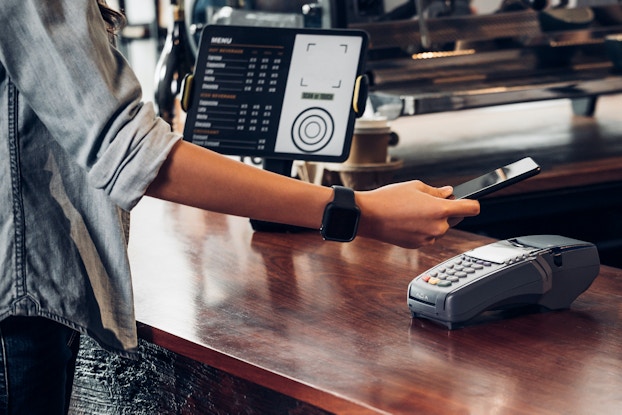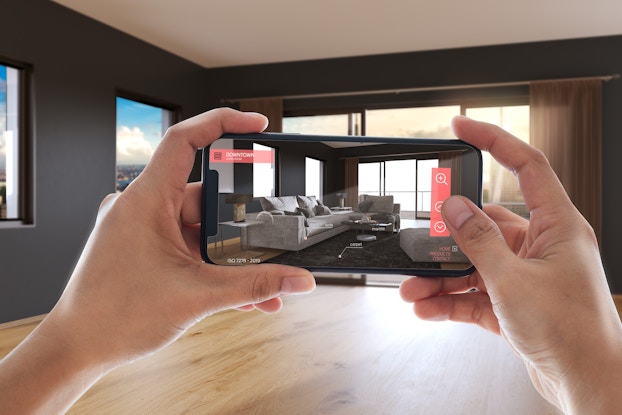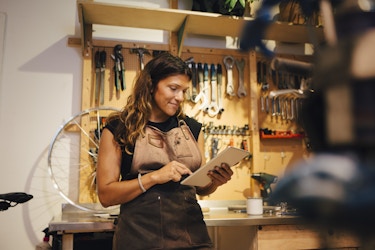
Why it matters:
- Retailers are tapping tap tech to deliver personalized content targeting distinct consumer groups.
- Merchants are crafting digital experiences, like cooking videos, that move shoppers from inspiration to purchase.
- As more grocery buys shift online, merchants like Walmart and Kroger are deploying in-store robots to fulfill e-commerce orders.
The past year has seen the fastest pace of retail innovation in decades.
It’s not slowing down in 2021.
“The expectations of retailers on the speed of technology deployment and utilization are going to get much greater,” Casey Craig, senior vice president, retail, for 3Pillar Global, a Fairfax, Virginia-based software product development company, told CO—.
Research and advisory firm Gartner surveyed chief information officers from major global corporations last fall, and 76% said demand for new digital products increased in 2020, and 83% said they expect that demand to accelerate this year.
Craig and other retail experts and executives shared with CO— the top trends that will change retail in 2021 and beyond.

It’s all about AI: Sending shoppers relevant offers in real time
When the pandemic dramatically shifted shopping from stores to online, retailers had to find new ways to connect with customers remotely, recommending products and anticipating demand to make sure those goods were in stock. They are turning to artificial intelligence and machine learning to leverage the data generated by the surge in e-commerce.
“Predictive analytics is something that we’ve been talking about in retail for many, many years,” Craig said. Now, he said, the technology has reached the point where retailers can analyze massive amounts of data in real time to make product recommendations or offer discounts to the right online customer at the right time. “It’s finally gaining some traction,” Craig said.
Retailers are also using artificial intelligence to create smarter digital asset management systems to catch the eyes of online shoppers, Randy Mercer, global manager of Chicago-based e-commerce product content provider 1WorldSync, told CO—.
Retailers are able to use technology to highlight content tailored to specific consumer groups and offer a more personalized online experience, Mercer said.
“The retailers that are growing in e-commerce are the ones that are getting really creative about the type of content they are using online,” he said.
[More here on creating micro-experiences for consumers.]
The retailers that are growing in e-commerce are the ones that are getting really creative about the type of content they are using online.
Randy Mercer, global manager, 1WorldSync
Deploying in-store robots to pack your online order
Two of the country’s biggest grocery sellers, Walmart and Kroger, are moving quickly to put robot-powered micro-fulfillment centers in their stores that can handle five to 10 times as many online orders per day.
Research firm CFRA, in a recent report, concluded that the grocery wars of the future will be fought by robots, with adoption of the technology crucial to capturing online sales.
Tapping data to move shoppers from inspiration to purchase
Retailers are finding new ways of leveraging the data they gather to direct consumers to targeted online experiences that lead to purchases, Dan Baril, head of value expansion at Google marketing, cloud, and analytics consulting agency Adswerve, told CO—.
A good example, he said, is the partnership between Walmart and interactive video company Eko to produce Walmart Cookshop videos where shoppers can not only choose cooking videos and customize recipes, but then click to purchase all the ingredients needed for the dish.
Similarly, the Amazon Prime show, "Making the Cut", lets viewers on the streaming service instantly purchase the winning contestant’s fashion designs.
“Those frictionless types of integrations and partnerships are something the retailer community is really starting to lean into,” Baril said.

Try-before-you buy via the magic of augmented reality
When the pandemic closed stores, retailers saw the value of augmented reality (AR) technology to let consumers virtually try on clothes, or see how a couch would look in their living rooms. Post-pandemic, enhanced AR will be used increasingly by shoppers to research products before completing the purchase in a store, Craig said.
“You’ll be starting your buying journey at home and using AR to see the furniture in your living room,” he said, “then ending the journey by going to the showroom, sitting on it, touching it, making sure that’s what you want.”
[More here on why AR will play a big role for businesses post-pandemic.]
Tech to yield a more convenient in-store experience
While many of the innovations in 2020 centered on the online experience, retailers in 2021 will be investing in tech to make physical stores more convenient, and make consumers feel safe shopping there, Nikki Baird, vice president of retail innovation at software provider Aptos, told CO—.
There is immense interest in “convenience investments in stores,” such as contactless payment, appointment setting, or traffic alerts on how many people are in a store – “all the things that will help consumers feel comfortable coming back to stores again,” Baird said.
CO— aims to bring you inspiration from leading respected experts. However, before making any business decision, you should consult a professional who can advise you based on your individual situation.
Follow us on Instagram for more expert tips & business owners stories.
CO—is committed to helping you start, run and grow your small business. Learn more about the benefits of small business membership in the U.S. Chamber of Commerce, here.








